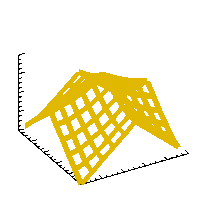 comp.lang.idl-pvwave archive
comp.lang.idl-pvwave archive
Messages from Usenet group comp.lang.idl-pvwave, compiled by Paulo Penteado
|
Show:
Today's Messages
:: Show Polls
:: Message Navigator
E-mail to friend |
   |
| ||||||||||||||
 |
IDL to Python bridge and "file-like" Python object
By: lecacheux.alain on Tue, 17 May 2016 06:54
|
|
 |
Re: IDL to Python bridge and "file-like" Python object
By: lecacheux.alain on Wed, 18 May 2016 03:58
|
|
 |
Re: IDL to Python bridge and "file-like" Python object
By: Jim Pendleton on Wed, 18 May 2016 06:15
|
|
 |
Re: IDL to Python bridge and "file-like" Python object
By: lecacheux.alain on Wed, 18 May 2016 09:22
|
|
 |
Re: IDL to Python bridge and "file-like" Python object
By: Fabzi on Thu, 19 May 2016 02:53
|
|
 |
Re: IDL to Python bridge and "file-like" Python object
By: lecacheux.alain on Thu, 19 May 2016 04:39
|
|
 |
Re: IDL to Python bridge and "file-like" Python object
By: Jim Pendleton on Thu, 19 May 2016 11:22
|
|
 |
Re: IDL to Python bridge and "file-like" Python object
By: lecacheux.alain on Thu, 19 May 2016 13:34
|
| Previous Topic: | issues appending roi from IDLanROI to IDLanROIGroup |
| Next Topic: | Read ASCII line till semicolon |
-=] Back to Top [=-
Current Time: Fri Nov 28 09:48:50 PST 2025
Total time taken to generate the page: 0.30554 seconds
 Members
Members Search
Search Help
Help Login
Login Home
Home




